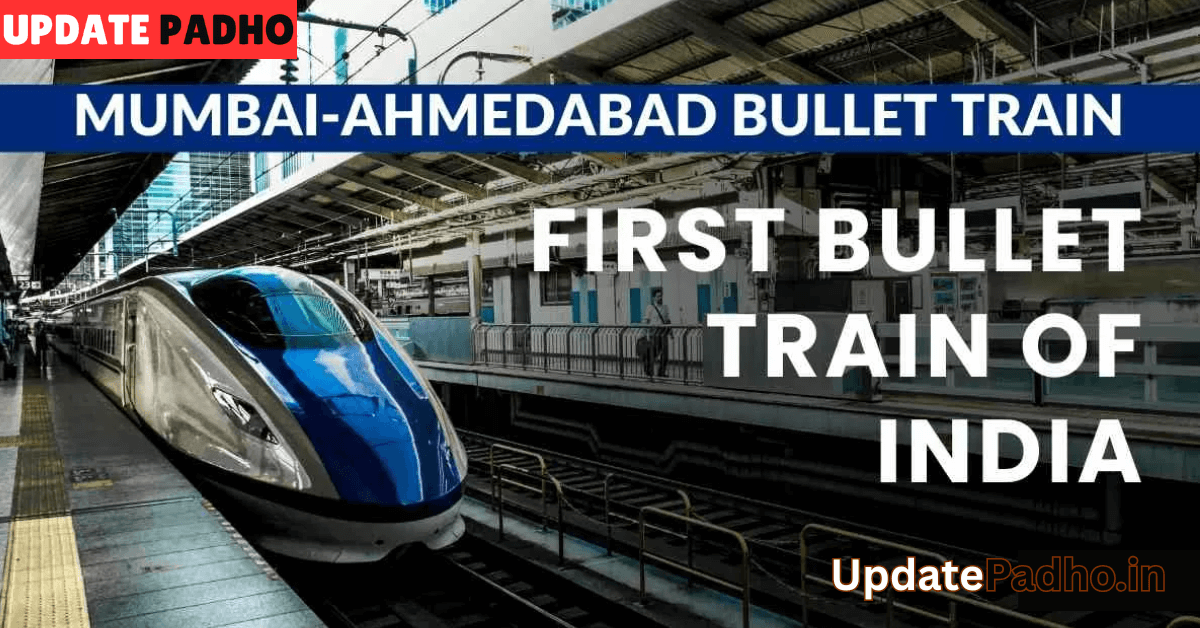As of July 2025, the bullet train project has achieved a major breakthrough: the first section (2.7 km) of the 21 km undersea tunnel between Ghansoli and Shilphata in Maharashtra is now completed. This marks the first underground connection between Mumbai and Thane a crucial engineering feat under Thane Creek.
In parallel, the viaduct construction has reached 310 km, including 300 km of cast viaduct as of May 2025, built using the rapid Full Span Launching Method (FSLM), along with over 6,455 full-span and 925 smaller span units. Work on 15 river bridges has been completed, with the remaining four nearing final stages.
Most recently on August 1, 2025, eight massive circular piers were completed for the bullet train bridge over the Sabarmati River in Ahmedabad. The bridge spans 480 m and reaches a height of 36 m—equivalent to a 12‑storey building—ensuring vertical clearance and structural stability.
At the station level, five of the 12 stations along the 508 km corridor are now fully built, while three more are nearing completion. Ahmedabad station (Kalupur) is planned to open by August 2026, and Surat’s high‑speed station is expected to be completed by the same year. The signature underground station at Bandra Kurla Complex (BKC) is under construction and will sit 32.5 m below ground, with foundations robust enough to support a 95 m high commercial tower above—an architectural marvel in itself.
Technology & Rolling Stock: E5, E10 & Indigenous Trains
India is leveraging Japanese high-speed rail technology: the E5-series Shinkansen will be used for initial operations, with trial runs scheduled for FY 2026–27 on the Gujarat section. More advanced E10-series trains—to be launched simultaneously in India and Japan by 2030—are now in the pipeline, featuring improved safety, higher speeds, and designs adapted to Indian temperatures and dust levels.
Simultaneously, India is pursuing the Make‑in‑India route: BEML‑Integral Coach Factory (ICF) is collaborating to build indigenous eight‑car train sets capable of ~280 km/h. These domestically produced sets will complement the Japanese units and support future corridors. The signaling and telecom system may be awarded to a Siemens‑DRA Infracon JV—combining European systems with Indian infrastructure at a bid of around ₹4,100 crore.
Timeline & Budget: Target Dates and Funding
According to recent statements (August 2025) in the Lok Sabha, the government projects completion of the Gujarat section by December 2027, with full corridor operations by December 2029. Land acquisition for Maharashtra has now been finalized, addressing one of the main delays.
The total project cost stands at approximately ₹1.08–1.10 lakh crore, with 81% funding through JICA (Japan International Cooperation Agency) and the rest shared between Indian Railways and the states of Gujarat and Maharashtra. By mid‑2025, nearly ₹78,839 crore had already been spent.
In internal rail‑industry discussion, some informal projections expect first trial operations in the Surat–Bilimora section by mid‑2026, with full completion by 2030 or possibly later.
Challenges & Community Insights
While progress continues, occasional setbacks have emerged. In March 2025, a metal fragment fell onto existing railway tracks in Ahmedabad (between Geratpur and Vatva)—causing disruptions to routine train services. Officials promptly cleared the debris and launched an investigation, reinforcing safety protocols amid construction disruption.
On a positive note, construction quality is being credited with high standards: Reddit users reported that major firms such as L&T and Tata are maintaining strict worker safety protocols and Japanese-style quality measures at sites in Gujarat and Maharashtra.
What’s Next? Gujarat First, Maharashtra Picks Up Pace
With Gujarat corridor work accelerating—and the undersea tunnel and viaducts making major headway—it’s likely the Gujarat segment will be operational by late 2027 or early 2028. Maharashtra’s segment, including the complex tunnel section, poses more schedule risk—but active construction is underway.
The upcoming phase will focus on trial runs using E5 trains, expanding the electric traction and signaling infrastructure, and continuing station and track work in Maharashtra and Delhi–Varanasi corridors.
✍️ Conclusion
The Mumbai–Ahmedabad bullet train project is entering its most visible and crucial phase. With the first undersea section complete, hundreds of viaduct kilometres built, station structures rising, and advanced rolling stock sourced—or locally manufactured—it’s finally transforming from concept to tangible change. While ambitious timelines remain fluid, the Gujarat portion is shaping up for readiness by late 2027, with full corridor operations targeting late 2029 or early 2030.



